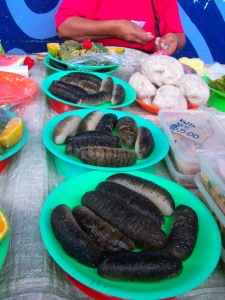My work looks at the ecology, evolution, and conservation of aquatic ecosystems, with an emphasis on coral reefs in the South West Pacific. I use a variety of methods, but the unifying theme of my research centers around quantifying the biodiveristy of the region and then finding ways to help that information resonate with policy makers to further conservation. Within that broad framework I have several specific research foci.
First, I am interested in how communities are assembled across multiple spatial scales. I am working on a large-scale project: sampling reef communities across a species diversity gradient from Papua New Guinea to Samoa to see whether certain clades/trophic guilds are over- or underrepresented in low diversity areas or those communities are assembled randomly from the set of clades in high diversity areas. We are using a combination of museum records, public databases and historical ecology information to view these patterns across both space and time. Within countries, I am interested in using collections data to understand how both direct and indirect anthropogenic pressure helps structure reef fish communities.

At the request of the Fijian government, we have conducted a study on the population connectivity of Holothuria edulis
The second theme I am interested in investigating is historical ecology. This field, which uses a variety of data to describe environmental conditions prior to the onset of formal scientific investigations, is important in setting baselines for conservation. I have looked at ancient shark tooth weapons from the Gilbert Islands to reconstruct ancient apex predatory communities, where we have identified two species of sharks that were extirpated prior to our first explorations of the region. I have also worked with colleagues to help explicitly draw links between historical ecology and conservation. Lastly, I blended teaching and research by teaching a seminar on Historical Ecology which resulted in a paper based on data from the New Bedford Whaling Museum.
Finally, I am interested in quantifying community level connectivity among populations. Much of this wrk has taken place in reefs in the South Pacific. I have used a variety of molecular genetic techniques to understand the spatial scales over which reefs are connected using comparative phylogeographic methods. At deeper evolutionary scales, I have also been using merisitic and morphological data to describe new endemic species throughout the region and to understand the phylogenetics of widespread species. I have brought these themes together in an explicit conservation context by working with the Fijian government to help incorporate these empirically derived data into their national system of marine protected areas.

